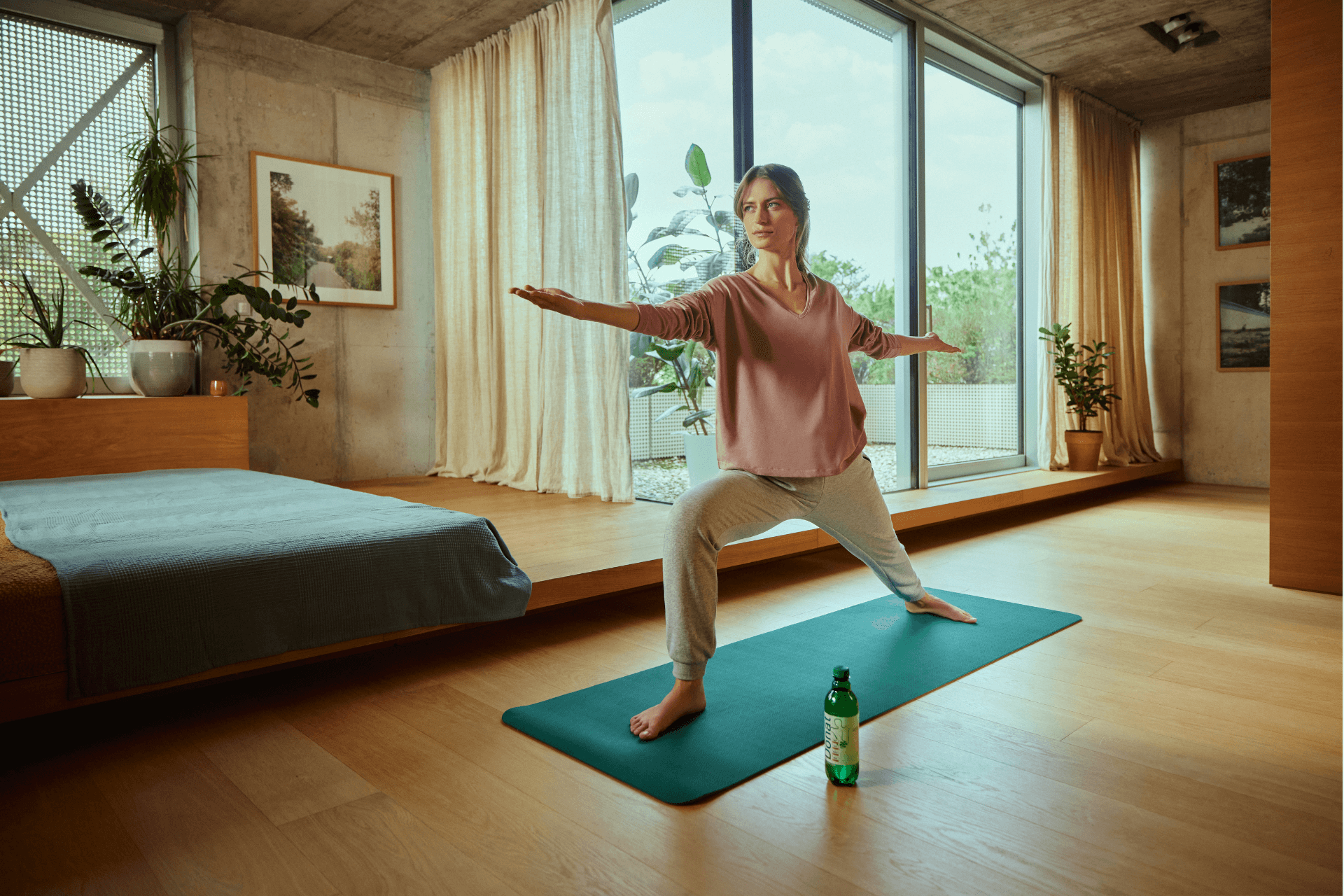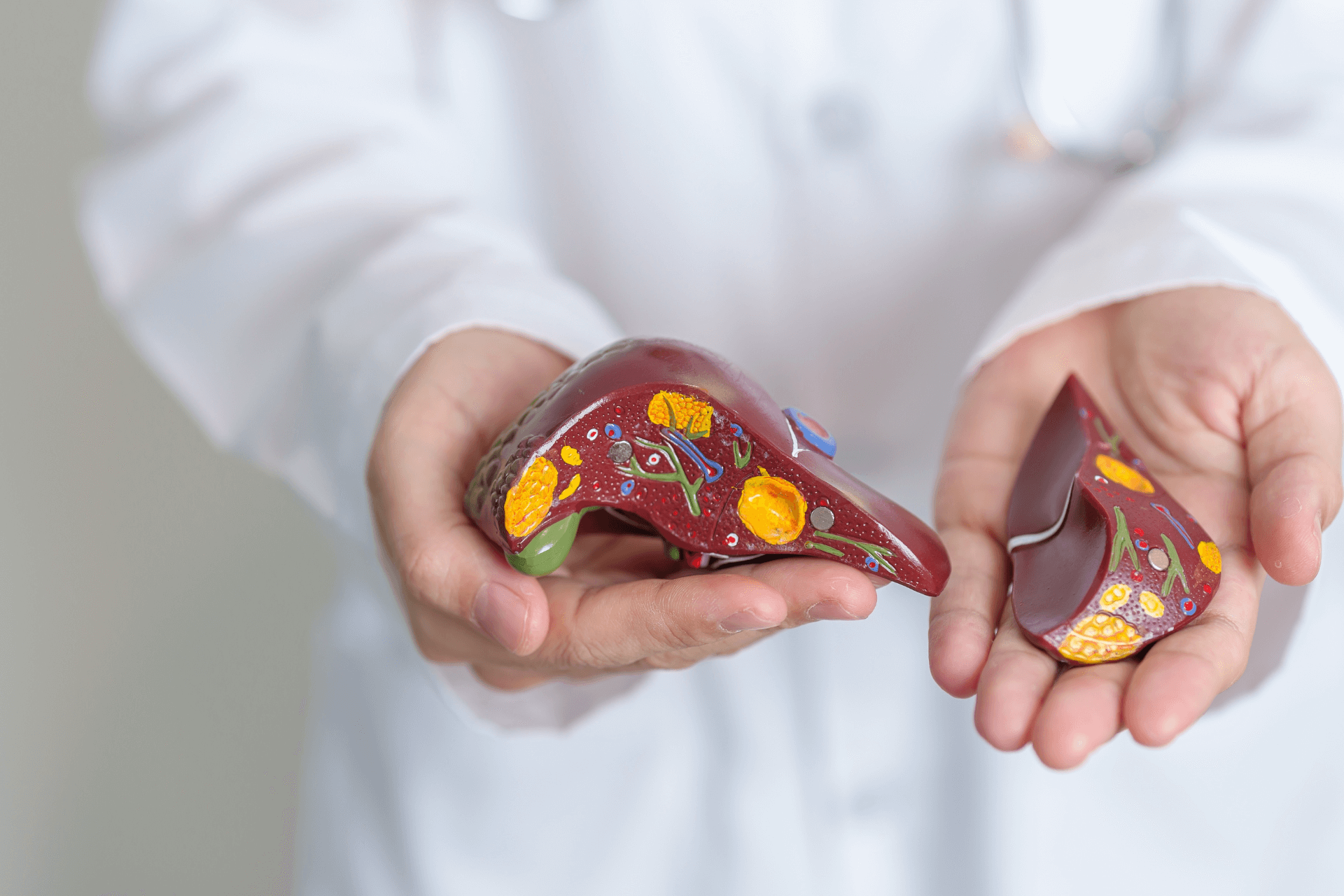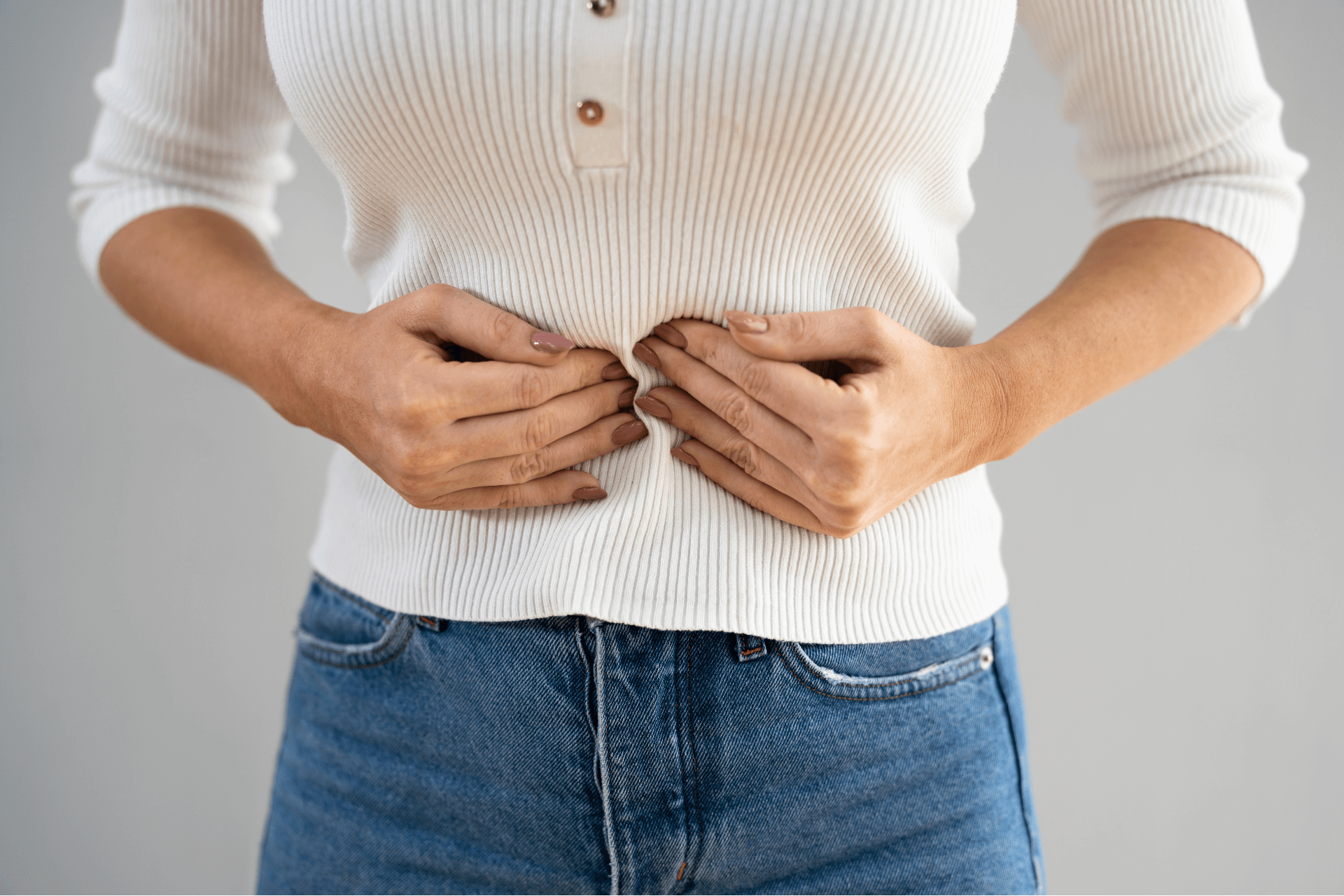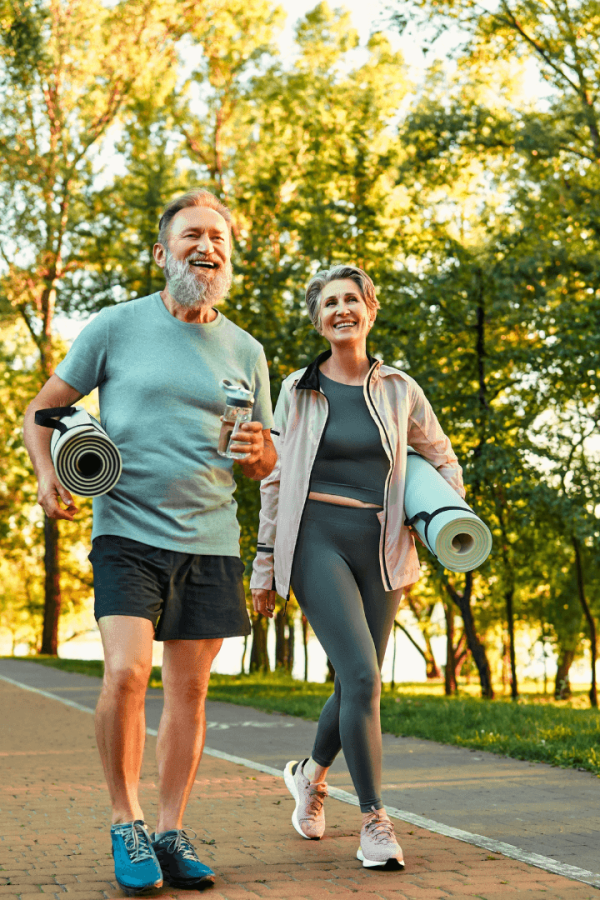1. Physical Activity
Physical activity refers to any type of movement that expends energy, including various forms of exercise like running, swimming, cycling, tennis, ball games, dancing, and walking in nature, as well as everyday activities such as climbing stairs, cleaning, and gardening.
Regular physical activity is the foundation of a healthy lifestyle.
We need balanced, safe, and effective activity tailored to our general condition and abilities to maintain good health. We should incorporate physical activity into our work environment, household chores, and leisure time.
Physical activity has numerous positive effects on health. During exercise, various physiological changes occur in the musculoskeletal, cardiovascular, respiratory, immune, endocrine, and digestive systems.
Regular physical activity reduces the risk of digestive issues and affects the gut microbiota (a group of microorganisms in the intestines), improving digestion. It also lowers stress levels, which often have a negative impact on the digestive system.
Sports and exercise help maintain a healthy body weight and act preventively against obesity and related health problems.

2. Digestion
Digestion is the process by which the body breaks down ingested food into smaller molecules that are absorbed and used for energy and cell repair. The process begins with chewing in the mouth and the action of enzymes in saliva, continues in the stomach where stomach acid breaks down food, and ends in the small intestine, where nutrients are absorbed into the bloodstream. Undigested remains move to the large intestine, where water is absorbed, and the remaining material is excreted as stools.
The type of food, fluid intake, physical activity, meal timing, chewing, stress, sleep, and lifestyle have an impact on digestion.
During exercise, blood is redirected from the digestive organs to the active muscles and lungs. Current research shows that high levels of physical activity reduce the risk of digestive system diseases, including gastroesophageal reflux disease (GERD), esophageal cancer, colon and rectal cancer, inflammatory bowel disease, gallbladder inflammation, gallstones, and non-alcoholic fatty liver disease (NAFLD).
In addition, physical activity positively affects gut microbiota by playing an important role in maintaining the balance of microorganisms in the digestive tract and regulating energy. Regular physical activity can improve the composition and function of the microorganisms living in our digestive system, as well as stimulate energy expenditure and regulate energy storage in the body.
Greater microbiota diversity is associated with increased resistance to pathogens and improved metabolic function. Physical activity promotes the growth of beneficial bacterial strains such as Faecalibacterium, Roseburia, Lactobacillus, and Akkermansia.
Additionally, regular exercise improves fat and carbohydrate metabolism, reducing the risk of chronic diseases like obesity, inflammatory bowel disease, type 2 diabetes, and cardiovascular diseases.
Recent research shows that muscle cells produce small-molecule proteins known as myokines during exercise. These act as mediators within the immune system, influencing anti-inflammatory processes and strengthening the gut barrier. This enhances immune function and reduces the risk of intestinal diseases.

3. Digestive Issues Related to Lack of Physical Activity
Lack of physical activity is associated with various digestive problems. Some of the most common issues include:
Constipation
Physical activity improves bowel motility by stimulating peristalsis (muscle contractions that move food through the digestive tract). Lack of movement can slow down the digestive process, leading to constipation.
Chronic constipation, increased pressure in the colon, and straining during bowel movements can increase the risk of developing hemorrhoids (enlarged and inflamed veins in the lower part of the rectum and anus) and diverticula (pouch-like protrusions in the intestinal wall). Regular physical activity helps maintain bowel motility and soft stools, reducing the risk of developing hemorrhoids and diverticulosis.
Obesity
Health issues such as gastroesophageal reflux disease (GERD), gallstones, and non-alcoholic fatty liver disease (NAFLD) are often associated with excess body weight and obesity.
In addition to dietary changes, regular physical activity is the gold standard for maintaining a healthy body weight. Intense aerobic exercise is recommended.
Regular physical activity not only helps prevent obesity but also assists in maintaining weight after weight loss and improves the symptoms of these conditions, supporting the digestive system.
Digestive System Cancers (Mouth, Throat, Esophagus, Stomach, Intestines, Pancreas, Gallbladder, and Liver)
Regular physical activity is crucial in reducing the risk of developing digestive system cancers, including colorectal, stomach, and esophageal cancers. Mechanisms such as reducing inflammation, regulating hormones (insulin, insulin-like growth factors, and estrogen), and strengthening the immune system are key factors by which exercise helps prevent these diseases.
It is recommended to engage in 30 minutes of moderate to vigorous exercise on most days of the week to lower the risk of diseases such as colorectal cancer.
Meta-analyses indicate that physically active individuals have up to a 24% lower risk of developing colorectal cancer compared to those who are inactive. While research results vary, it can be concluded that physical activity reduces the risk of digestive system cancers by 12 to 27%.

Liver Diseases and Dysfunction
Research indicates that prolonged sitting increases the risk of developing chronic liver diseases, such as non-alcoholic fatty liver disease (NAFLD). Replacing at least one hour of sitting each day with physical activity can significantly reduce the risk of these conditions. Exercise helps decrease fat deposits in the liver, improves metabolism, and lowers the risk of NAFLD.
Digestive Issues Related to Stress
Stress has a significant impact on bowel function and the digestive system. It can cause changes in bowel peristalsis—speeding it up in some individuals, leading to diarrhea, while slowing it down in others, resulting in constipation. Stress can also negatively affect the composition of the gut microbiota, further disrupting digestion, nutrient absorption, and immune response. This combination of factors can contribute to digestive issues such as irritable bowel syndrome (IBS), leaky gut syndrome, inflammatory bowel disease (IBD), or even colorectal cancer.
Key ways in which physical activity helps in managing stress include reducing cortisol levels, a hormone released during stressful situations, thereby alleviating the negative effects of stress on the digestive system. Exercise promotes the release of endorphins and other neurotransmitters, which improve mood, reduce pain sensitivity, and strengthen the immune system. Additionally, regular activity contributes to an increase in the diversity of beneficial gut bacteria, helps maintain a balanced gut microbiota, and reduces symptoms of depression and anxiety.
Chronic Inflammations and Food Intolerances
Physical activity reduces the level of inflammatory markers in the body, which positively affects the digestive system. Chronic inflammation is associated with numerous digestive diseases, including Crohn’s disease, ulcerative colitis, and irritable bowel syndrome (IBS). Regular moderate-intensity exercise can decrease inflammation, reduce the risk of developing these diseases, alleviate symptoms in those affected, and improve quality of life.
Similar effects have been observed in patients with celiac disease and other forms of food intolerance. Celiac disease, an autoimmune condition triggered by gluten, damages the lining of the small intestine, making it difficult to absorb nutrients. This can lead to fatigue, abdominal pain, bloating, and malnutrition. Additionally, celiac disease can cause muscle loss and decreased bone density due to poor calcium absorption. Strength training and other weight-bearing exercises help to build muscle and improve bone density, which is crucial for preventing osteoporosis and reducing the risk of fractures. Regular physical activity enhances the quality of life for those with celiac disease by increasing energy levels, improving mood, and reducing stress.
It also has a positive effect on the vagus nerve, a key component of the parasympathetic nervous system that controls many vital functions, including digestion and inflammatory responses.
Irritable bowel syndrome – IBS
Research shows that individuals with IBS exercise less compared to healthy individuals due to their symptoms. However, it is believed that a tailored exercise regimen can positively impact the course of the disease. Patients with IBS who are physically active often notice a reduction in symptoms, particularly constipation, less fatigue, and relief from digestive discomfort, which significantly improves their quality of life. Low-intensity activities such as walking, yoga, cycling, swimming, and aerobics are recommended.

Gastroesophageal Reflux Disease (GERD)
GERD is a condition where stomach acid returns to the esophagus, causing heartburn and other symptoms. Regular, moderate physical activity helps maintain a healthy body weight, which reduces pressure on the stomach and improves the function of the lower esophageal sphincter. Research shows that physically active individuals are less prone to GERD symptoms compared to those with a sedentary lifestyle. However, caution is needed when choosing the intensity of exercise, as high-intensity activities can increase abdominal pressure and worsen the symptoms.
4. Types of Physical Activities that Help Maintain Digestive System Function
Aerobic Exercise (e.g., walking, running, cycling, swimming)
Research shows that aerobic activity significantly contributes to more efficient digestion and the prevention of constipation by stimulating intestinal peristalsis. Additionally, it promotes circulation in the digestive system, which increases nutrient absorption, speeds up regeneration, and improves the overall function of the digestive system. It also helps regulate body weight and blood sugar levels.
Strength and Endurance Exercises (e.g., Bodyweight Exercises, Resistance Exercises, and Weightlifting)
Strength exercises help build muscle mass and improve body composition, which is important for weight control. Reducing body fat eases pressure on abdominal organs. Additionally, exercise improves posture, preventing acid reflux, while strengthening abdominal muscles supports internal organs, thus enhancing digestive function.

Yoga and Meditation
Yoga includes various poses and breathing techniques that can help improve digestion and alleviate digestive issues. Certain yoga poses stimulate circulation in the abdominal cavity and improve the mobility of internal organs, further promoting digestion. Meditation and breathing techniques help reduce stress, which is often associated with digestive problems like constipation, bloating, abdominal pain, diarrhea, and frequent bowel movements.
Practicing yoga and breathing exercises also stimulates vagus nerve activity, bringing numerous benefits for overall health and well-being.
Pilates
In addition to focusing on strengthening the core and trunk stability, Pilates also includes breathing techniques that help reduce stress, thereby positively affecting digestion. Strengthening the core muscles facilitates the passage of food through the digestive tract and promotes regular bowel movements. Exercises that combine stretching and strengthening of the abdominal muscles can help reduce bloating and gas.
Research shows that Pilates has a positive effect on the digestive system by improving nutrient absorption, regulating regular bowel movements, and contributing to the overall health of the digestive system. Additionally, Pilates can reduce the need for laxatives and heartburn medications, whose prolonged use can cause serious side effects such as dependency, intestinal paralysis, electrolyte imbalance, and chronic kidney disease.
Dynamic Neuromuscular Stabilization (DNS)
DNS is a therapeutic approach that focuses on restoring and improving the body’s natural movement patterns. The exercises are designed to optimize the function of the musculoskeletal system, enhance stability and coordination, and relieve pain. A key component is the use of diaphragmatic breathing, which strengthens the core and reduces pressure on the abdominal organs, indirectly improving digestive system function.
The combination of manual visceral manipulation, which enhances the mobility and function of internal organs, DNS exercises, and elements of yoga can optimize digestive health and reduce gastrointestinal issues.

Stretching
The elasticity of the abdominal muscles, which can be achieved and improved through stretching, can significantly alleviate issues such as constipation. Stretching contributes to the mobility of the gastrointestinal tract and internal organs, which play a key role in the proper functioning of the digestive system.
Experts believe that gentle stretching of the front of the abdomen creates more space for the duodenum and allows the diaphragm to work optimally, which is important for bowel movements and prevention of acid reflux.
The Role of Physical Activity in Older Adults
Physical activity plays a key role in maintaining digestive health in older adults. As we age, physiological changes that can affect digestion occur but regular physical activity helps alleviate many of these changes.
With age, the muscles that control the passage of food through the esophagus weaken, making swallowing more difficult. Additionally, stomach elasticity decreases, slowing its emptying. These changes increase the risk of digestive issues such as constipation, peptic ulcers, and small intestinal bacterial overgrowth (SIBO). Moreover, metabolism slows down with age, which can lead to weight gain and a higher risk of metabolic diseases. Regular physical activity helps maintain good digestive health by improving circulation in the digestive system.
Physical activity also contributes to better cognitive health, thereby indirectly affecting the functioning of the digestive system.
5. Recommendations for Physical Activity
All types of physical activity have a positive impact on the digestive system. Incorporating exercise into a daily routine improves intestinal peristalsis, helps maintain a healthy body weight, and reduces the risk of developing digestive disorders.
Regular physical activity contributes to longevity and a better quality of life, which is why the World Health Organization recommends including physical activity in our daily lives.
Why is physical activity recommended for adults aged 18 to 64?
- Provides mortality reduction.
- Prevents cardiovascular diseases.
- Regulates blood pressure.
- Lowers risk of type 2 diabetes and certain cancers.
- Improves mental health and cognitive functions.
- Impacts weight management.
- Enhances sleep quality.
It is recommended to engage in at least 150 to 300 minutes of moderate-intensity aerobic activity per week, 75 to 100 minutes of high-intensity aerobic activity, or a combination of both. Additionally, strength training exercises for major muscle groups should be included at least twice a week.

Adults are advised to start with a smaller amount of activity and gradually increase the frequency, intensity, and duration of exercise. Mild to moderate-intensity exercises play a crucial role in maintaining gut health. High-intensity exercises can reduce blood flow to digestive organs and increase pressure on abdominal organs, potentially causing heartburn, nausea, vomiting, abdominal pain, diarrhea, and even gastrointestinal bleeding. Therefore, it is essential to gradually increase exercise intensity and adjust it according to one’s fitness level.
It is recommended to consult a physiotherapist to determine the type and intensity of physical activity that best suits individual needs, functional limitations, therapy, and rehabilitation or treatment goals.
Every type of activity, whether individual or group-based, has specific effects that can contribute to better digestive health. Therefore, regular inclusion of physical activity in daily life is crucial for maintaining and improving health. It is important that physical activity is tailored to the individual’s abilities and provides a sense of satisfaction and fulfillment.
REFERENCE LIST
- Aya, V., Flórez, A., Perez, L., & Ramírez, J. D. (2021). Association between physical activity and changes in intestinal microbiota composition: A systematic review. PLoS ONE, 16(2 February), 1–21. https://doi.org/10.1371/journal.pone.0247039
- Bhikha, P. R. (2016). Yoga and Pilates : analysing the rewards. July, 1–12.
- Boyle, T., Keegel, T., Bull, F., Heyworth, J., & Fritschi, L. (2012). Physical activity and risks of proximal and distal colon cancers: A systematic review and meta-analysis. Journal of the National Cancer Institute, 104(20), 1548–1561. https://doi.org/10.1093/jnci/djs354
- Brouns, F., & Beckers, E. (1993). Is the Gut an Athletic Organ? Sports Medicine, 15(4), 242–257. https://doi.org/10.2165/00007256-199315040-00003
- Bull, F. C., Al-Ansari, S. S., Biddle, S., Borodulin, K., Buman, M. P., Cardon, G., Carty, C., Chaput, J. P., Chastin, S., Chou, R., Dempsey, P. C., Dipietro, L., Ekelund, U., Firth, J., Friedenreich, C. M., Garcia, L., Gichu, M., Jago, R., Katzmarzyk, P. T., … Willumsen, J. F. (2020). World Health Organization 2020 guidelines on physical activity and sedentary behaviour. British Journal of Sports Medicine, 54(24), 1451–1462. https://doi.org/10.1136/bjsports-2020-102955
- Campaniello, D., Corbo, M. R., Sinigaglia, M., Speranza, B., Racioppo, A., Altieri, C., & Bevilacqua, A. (2022). How Diet and Physical Activity Modulate Gut Microbiota: Evidence, and Perspectives. Nutrients, 14(12). https://doi.org/10.3390/nu14122456
- Celiac Disease and Physical Activity. (2009). Celiac.com. Dostopno na: https://www.celiac.com/celiac-disease/celiac-disease-and-physical-activity-r1447/ (08.08.2024)
- Chen, J., Ruan, X., Fu, T., Lu, S., Gill, D., He, Z., Burgess, S., Giovannucci, E. L., Larsson, S. C., Deng, M., Yuan, S., & Li, X. (2024). Sedentary lifestyle, physical activity, and gastrointestinal diseases: evidence from mendelian randomization analysis. EBioMedicine, 103, 105110. https://doi.org/10.1016/j.ebiom.2024.105110
- Corrigendum to: “Muscle-Organ Crosstalk: The Emerging Roles of Myokines.” (2021). Endocrine Reviews, 42(1), 97–99. https://doi.org/10.1210/endrev/bnaa024
- Costa, R. J. S., Camões-Costa, V., Snipe, R. M. J., Dixon, D., Russo, I., & Huschtscha, Z. (2019). Impact of exercise-induced hypohydration on gastrointestinal integrity, function, symptoms, and systemic endotoxin and inflammatory profile. Journal of Applied Physiology, 126(5), 1281–1291. https://doi.org/10.1152/japplphysiol.01032.2018
- Cryan, J. F., & Dinan, T. G. (2012). Mind-altering microorganisms: The impact of the gut microbiota on brain and behaviour. Nature Reviews Neuroscience, 13(10), 701–712. https://doi.org/10.1038/nrn3346
- De Oliveira, E. P., & Burini, R. C. (2009). The impact of physical exercise on the gastrointestinal tract. Current Opinion in Clinical Nutrition and Metabolic Care, 12(5), 533–538. https://doi.org/10.1097/MCO.0b013e32832e6776
- Dukas, L. (2003). Association between physical activity, fiber intake, and other lifestyle variables and constipation in a study of women. The American Journal of Gastroenterology, 98(8), 1790–1796. https://doi.org/10.1016/s0002-9270(03)00442-8
- Exercise for digestion_ Yoga, stretching, walking, breathing exercises. (n.d.). Dostopno na: https://www.medicalnewstoday.com/articles/exercises-to-help-digestion (07.08.2024)
- Garber, C. E., Blissmer, B., Deschenes, M. R., Franklin, B. A., Lamonte, M. J., Lee, I. M., Nieman, D. C., & Swain, D. P. (2011). Quantity and quality of exercise for developing and maintaining cardiorespiratory, musculoskeletal, and neuromotor fitness in apparently healthy adults: Guidance for prescribing exercise. Medicine and Science in Sports and Exercise, 43(7), 1334–1359. https://doi.org/10.1249/MSS.0b013e318213fefb
- Johannesson, E. (2018). Irritable bowel syndrome and Physical activity.
- Gastroenterology and Hepatology, 11(12), 817–825.Laurens, C., Bergouignan, A., & Moro, C. (2020). Exercise-Released Myokines in the Control of Energy Metabolism. Frontiers in Physiology, 11. https://doi.org/10.3389/fphys.2020.00091
- Leal, L. G., Lopes, M. A., & Batista Jr, M. L. (2018). Physical exercise-induced myokines and muscle-adipose tissue crosstalk: a review of current knowledge and the implications for health and metabolic diseases. Frontiers in physiology, 9, 1307.
- Maccadanza, R. (2004). Stretching Basics. Sterling Publishing Company, Inc..
- Maughan, R. J., Shirreffs, S. M., Merson, S. J., & Horswill, C. A. (2005). Fluid and electrolyte balance in elite male football (soccer) players training in a cool environment. Journal of Sports Sciences, 23(1), 73–79. https://doi.org/10.1080/02640410410001730115
- Mayer, E. A. (2011). Gut feelings: The emerging biology of gut-“brain communication. Nature Reviews Neuroscience, 12(8), 453–466. https://doi.org/10.1038/nrn3071
- Merck Manual. (2024). Effects of aging on the digestive system. Dostopno na: https://www.merckmanuals.com/home/digestive-disorders/biology-of-the-digestive-system/effects-of-aging-on-the-digestive-system (08.08.2024)
- Moloney, R. D., Johnson, A. C., O’Mahony, S. M., Dinan, T. G., Greenwood-Van Meerveld, B., & Cryan, J. F. (2016). Stress and the Microbiota-Gut-Brain Axis in Visceral PaRelevance to Irritable Bowel Syndrome. CNS Neuroscience and Therapeutics, 22(2), 102–117. https://doi.org/10.1111/cns.12490
- Monda, V., Villano, I., Messina, A., Valenzano, A., Esposito, T., Moscatelli, F., Viggiano, A., Cibelli, G., Chieffi, S., Monda, M., & Messina, G. (2017). Exercise modifies the gut microbiota with positive health effects. Oxidative Medicine and Cellular Longevity, 2017. https://doi.org/10.1155/2017/3831972
- Peters, H. P. F., De Vries, W. R., Vanberge-Henegouwen, G. P., & Akkermans, L. M. A. (2001). Potential benefits and hazards of physical activity and exercise on the gastrointestinal tract. Gut, 48(3), 435–439. https://doi.org/10.1136/gut.48.3.435
- Pinkas, M.; Brzozowski, T. The Role of the Myokine Irisin in the Protection and Carcinogenesis of the Gastrointestinal Tract. Antioxidants 2024, 13, 413. https://doi.org/10.3390/antiox13040413
- Rabieezadeh, A., Mahdavinejad, R., Sedehi, M. et al. The effects of an 8-week dynamic neuromuscular stabilization exercise on pain, functional disability, and quality of life in individuals with non-specific chronic low back pain: a randomized clinical trial with a two-month follow-up study. BMC Sports Sci Med Rehabil 16, 161 (2024). https://doi.org/10.1186/s13102-024-00948-9
- Radziszewska, M., Smarkusz-Zarzecka, J., & Ostrowska, L. (2023). Nutrition, Physical Activity and Supplementation in Irritable Bowel Syndrome. Nutrients, 15(16). https://doi.org/10.3390/nu15163662
- Ramos, C., Gibson, G. R., Walton, G. E., Magistro, D., Kinnear, W., & Hunter, K. (2022). Systematic Review of the Effects of Exercise and Physical Activity on the Gut Microbiome of Older Adults. Nutrients, 14(3), 1–18. https://doi.org/10.3390/nu14030674
- Rothschild, J. A., Kilding, A. E., & Plews, D. J. (2020). What should i eat before exercise? Pre-exercise nutrition and the response to endurance exercise: Current prospective and future directions. Nutrients, 12(11), 1–23. https://doi.org/10.3390/nu12113473
- Ryu, S., Chang, Y., Jung, H. S., Yun, K. E., Kwon, M. J., Choi, Y., Kim, C. W., Cho, J., Suh, B. S., Cho, Y. K., Chung, E. C., Shin, H., & Kim, Y. S. (2015). Relationship of sitting time and physical activity with non-alcoholic fatty liver disease. Journal of Hepatology, 63(5), 1229–1237. https://doi.org/10.1016/j.jhep.2015.07.010
- Sanders, M. E., Merenstein, D., Merrifield, C. A., & Hutkins, R. (2018). Probiotics for human use. Nutrition bulletin, 43(3), 212-225. https://doi.org/10.1111/nbu.12334
- Simrén, M., Månsson, A., Langkilde, A. M., Svedlund, J., Abrahamsson, H., Bengtsson, U., & Björnsson, E. S. (2001). Food-related gastrointestinal symptoms in the irritable bowel syndrome. Digestion, 63(2), 108–115. https://doi.org/10.1159/000051878
- Strasser, B. (2012). Physical activity in obesity and metabolic syndrome. Annals of the New York Academy of Sciences, 1281(1), 141–159. doi:10.1111/j.1749-6632.2012.06785.x
- The Psychology of Celiac Disease: Understanding the Psychological Challenges of Celiac Disease and Strategies for Overcoming these Barriers. Celiac.com. Dostopno na: https://www.celiac.com/celiac-disease/the-psychology-of-celiac-disease-understanding-the-psychological-challenges-of-celiac-disease-and-strategies-for-overcoming-these-barriers-r4830/ (08.08.2024)
- Trost, S. G., Blair, S. N., & Khan, K. M. (2014). Physical inactivity remains the greatest public health problem of the 21st century: Evidence, improved methods and solutions using the “7 investments that work” as a framework. British Journal of Sports Medicine, 48(3), 169–170. https://doi.org/10.1136/bjsports-2013-093372
- Trust your Gut: Visceral Manipulation for Digestive Disorders (2019). Dostopno na: https://www.nhpcanada.org/NHPC-Blog/Trust-your-Gut-Visceral-Manipulation-for-Digestive-Disorders
- Watts, C. (2018). Yoga therapy for digestive health. Singing Dragon.
- Wolin, K. Y., Yan, Y., Colditz, G. A., & Lee, I. M. (2009). Physical activity and colon cancer prevention: A meta-analysis. British Journal of Cancer, 100(4), 611–616. https://doi.org/10.1038/sj.bjc.6604917
- Xie, F., You, Y., Huang, J., Guan, C., Chen, Z., Fang, M., … & Han, J. (2021). Association between physical activity and digestive-system cancer: An updated systematic review and meta-analysis. Journal of sport and health science, 10(1), 4-13.
Choose chapter:





